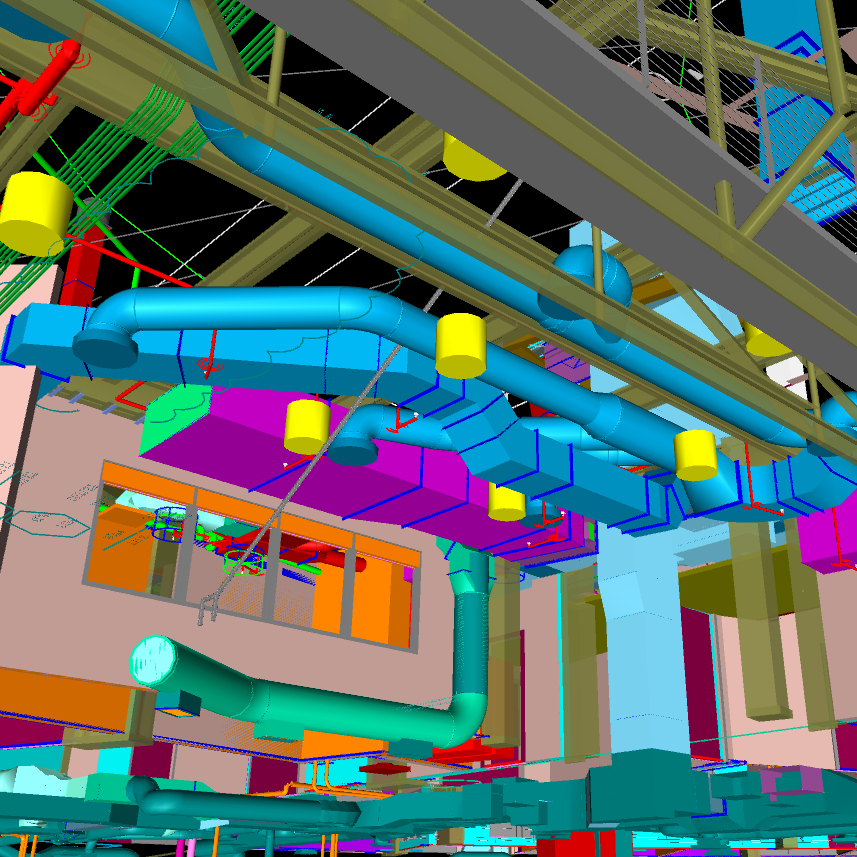Building information modeling (BIM) is one of the most important tools that teams have in their toolbox during a construction project. BIM is a 3D-modeling and analysis software tool that enables teams, including architects, engineers and construction professionals, to estimate, plan, schedule and manage building and infrastructure projects.
A key technology component of the construction process, BIM is integral in avoiding constructability issues and delivering a project on-time and within budget. Adding BIM to the process also creates a framework for communication and responsibility within the team – ultimately enabling better outcomes.
Here are three of the major benefits of using BIM throughout the construction process:
- Identify Issues Up Front
BIM enables teams to model all of the components of a construction project in 3D, utilizing the architectural or structural background and then mapping all of the different trades (e.g., mechanical, plumbing, electrical, fire, steel) onto that background. By creating one model for the project, it enables the team to quickly identify potential issues between different trades and then discuss possible solutions.
To ensure that potential complications are identified at the beginning of the process, it is also important to confirm that the BIM scope encompasses all potential “problem areas.” While this is an investment, it often pays dividends in time and money. There have been many times where the C.W. Driver Companies team has come across an issue during the construction process, and they question: “Why wasn’t this caught in BIM?” More often than not, the answer is that the particular issue was not modeled in BIM due to scope.
- Avoid Costly Mistakes
Because the team is able to identify any constructability issues on the front end of a project through BIM, it can avoid costly mistakes on the back-end. BIM helps to prevent the need to redo things or come up with on the spot solutions, which may end up costing more in time, labor and materials. However, BIM remains a tool, not a magic wand, which means that its output is only as good as the information that is put into the system.
In an ideal world, BIM would be used through the entire construction process for each and every job. While there is an initial cost with BIM, both in terms of time and money, the ultimate savings on the back-end provides a strong return on investment. At the same time, the team also must determine what level of BIM (e.g., how early in the process BIM is employed, the timeline for modeling) is appropriate for each job. Realistically, for smaller jobs where a 2D model will suffice and allow for project completion in a fraction of the time, BIM will not likely produce a significant ROI. In short, analyzing the BIM process for each job is critical to ensure its appropriate and most valuable usage.
At C.W. Driver Companies, we recently employed our standard BIM process on a casino construction project. Because the casino was going to use all of the space below the main floor for an eight-level below-ground parking structure, it meant that all of the duct work, conduits and other trades all must be housed in the ceiling. As is standard with many casinos, this project called for high ceilings, leaving a tight footprint for all of the mechanical systems. Through the BIM process, our team was able to identify all of the pinch points and resolve them prior to the beginning of the construction process. Not only were we able to avoid any costly or time-consuming issues, but BIM helped us to accomplish the client’s end goals.
- Create Framework for Communication and Responsibility
While BIM has been around for almost 20 years, it was not widely used until about 10 years ago. Over the course of the past 10 years, the industry has seen a dramatic increase in BIM’s usage, but not as great of an improvement in the software itself. Instead, the improvements lie in how users engage with the software and the processes that have been developed to manage the software.
BIM management styles vary from company to company, and even manager to manager. As a result, there are many different styles of how to best manage the process. When used most effectively, BIM not only identifies potential problems ahead of time, but also serves as a way for teams to create a path for solving those issues.
At C.W. Driver Companies, we have refined the process of how to manage and coordinate BIM so that it can also track and manage the changes that the various trades and teams have committed to make during the process. In this way, BIM not only serves as a tool to find the problems, but also as a way to assign fixes and track those assignments and deadlines. Developing this type of framework allows for easy and open communication among the team members and a better end-product.
While BIM does have many benefits, the bottom line is that it is only a tool. BIM’s output is only as good as the information that is put in during the process. BIM cannot identify pitfalls for systems or trades not included in the initial modeling. It also takes time, resources, planning and management. But, when used comprehensively, BIM is one of the most valuable resources that the construction industry has available.


